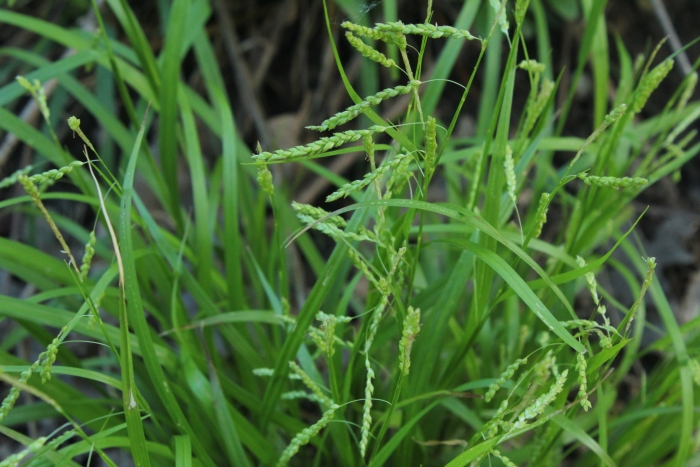Graceful Sedge
(Carex gracillima)
Graceful Sedge (Carex gracillima)
/
/

Quinten Wiegersma
CC BY 4.0
Image By:
Quinten Wiegersma
Recorded By:
Copyright:
CC BY 4.0
Copyright Notice:
Photo by: Quinten Wiegersma | License Type: CC BY 4.0 | License URL: http://creativecommons.org/licenses/by/4.0/ | Rights Holder: Quinten Wiegersma | Publisher: iNaturalist | Date Created: 2019-05-30T18:49:20-07:00 |

























Estimated Native Range
Summary
Carex gracillima, commonly known as Graceful Sedge or Purple-Sheathed Graceful Sedge, is a perennial herbaceous plant that thrives in the understory of deciduous forests, often found in moist to wet conditions along streams, in swamps, and in rich, shady woodlands. It is native to central and eastern Canada and the central and eastern United States. Graceful Sedge typically grows to a height of 18-24 inches (45-60 cm) with a similar spread, forming dense clumps of fine-textured, grass-like foliage. The plant is characterized by its narrow, arching leaves and distinctive purple sheaths at the base of the leaves. It produces inconspicuous greenish-brown flowers in late spring to early summer, which are not particularly showy, but add a subtle texture to the plant’s appearance.
Graceful Sedge is valued for its ability to thrive in shady conditions and its preference for moist soils, making it an excellent choice for naturalizing in woodland gardens, rain gardens, and along water features. It is also used as a ground cover or for erosion control on damp slopes. In cultivation, it requires consistently moist soil and can tolerate standing water, making it suitable for planting in areas that are too wet for many other species. It prefers partial to full shade and is relatively low maintenance once established. While not known for significant pest or disease issues, it can suffer from root rot if planted in soil that is too dry.CC BY-SA 4.0
Graceful Sedge is valued for its ability to thrive in shady conditions and its preference for moist soils, making it an excellent choice for naturalizing in woodland gardens, rain gardens, and along water features. It is also used as a ground cover or for erosion control on damp slopes. In cultivation, it requires consistently moist soil and can tolerate standing water, making it suitable for planting in areas that are too wet for many other species. It prefers partial to full shade and is relatively low maintenance once established. While not known for significant pest or disease issues, it can suffer from root rot if planted in soil that is too dry.CC BY-SA 4.0
Plant Description
- Plant Type: Grass
- Height: 2-3 feet
- Width: 2-3 feet
- Growth Rate: Slow
- Flower Color: N/A
- Flowering Season: Spring, Summer
- Leaf Retention: Semi-deciduous
Growth Requirements
- Sun: Part Shade, Full Shade
- Water: Medium
- Drainage: Medium, Slow
Common Uses
Deer Resistant, Erosion Control, Low Maintenance, Water Garden
Natural Habitat
Native to the understory of deciduous forests, often found in moist to wet conditions along streams, in swamps, and in rich, shady woodlands
Other Names
Common Names: Purple-Sheathed Graceful Sedge, Slender Prairie Sedge
Scientific Names: , Carex gracillima, Carex digitalis, Carex gracillima f. humilis, Carex gracillima var. gracillima, Carex gracillima var. humilis, Carex gracillima var. macerrima, Loxanisa gracillima,
GBIF Accepted Name: